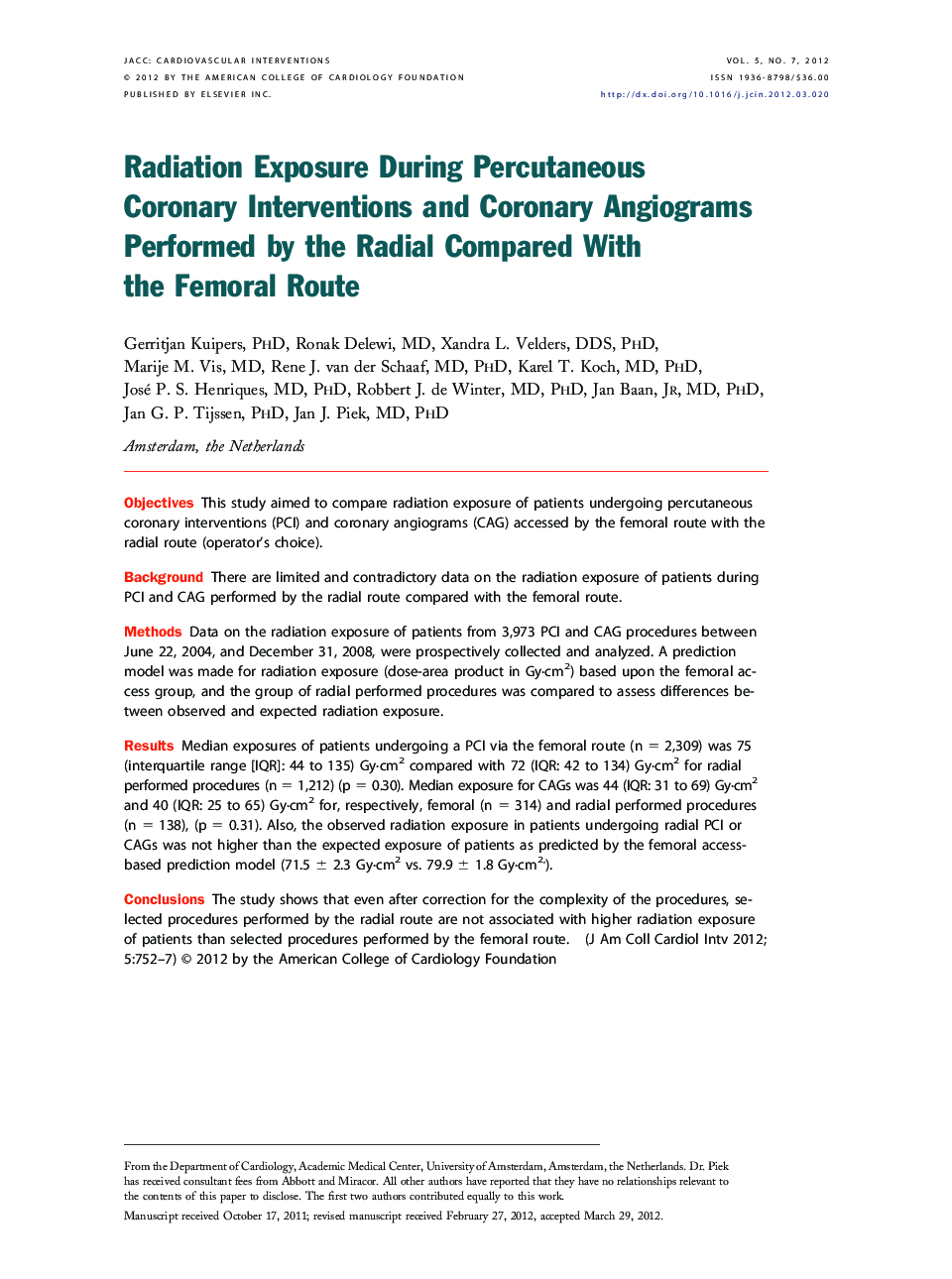| Article ID | Journal | Published Year | Pages | File Type |
|---|---|---|---|---|
| 2941132 | JACC: Cardiovascular Interventions | 2012 | 6 Pages |
ObjectivesThis study aimed to compare radiation exposure of patients undergoing percutaneous coronary interventions (PCI) and coronary angiograms (CAG) accessed by the femoral route with the radial route (operator's choice).BackgroundThere are limited and contradictory data on the radiation exposure of patients during PCI and CAG performed by the radial route compared with the femoral route.MethodsData on the radiation exposure of patients from 3,973 PCI and CAG procedures between June 22, 2004, and December 31, 2008, were prospectively collected and analyzed. A prediction model was made for radiation exposure (dose-area product in Gy·cm2) based upon the femoral access group, and the group of radial performed procedures was compared to assess differences between observed and expected radiation exposure.ResultsMedian exposures of patients undergoing a PCI via the femoral route (n = 2,309) was 75 (interquartile range [IQR]: 44 to 135) Gy·cm2 compared with 72 (IQR: 42 to 134) Gy·cm2 for radial performed procedures (n = 1,212) (p = 0.30). Median exposure for CAGs was 44 (IQR: 31 to 69) Gy·cm2 and 40 (IQR: 25 to 65) Gy·cm2 for, respectively, femoral (n = 314) and radial performed procedures (n = 138), (p = 0.31). Also, the observed radiation exposure in patients undergoing radial PCI or CAGs was not higher than the expected exposure of patients as predicted by the femoral access-based prediction model (71.5 ± 2.3 Gy·cm2 vs. 79.9 ± 1.8 Gy·cm2,).ConclusionsThe study shows that even after correction for the complexity of the procedures, selected procedures performed by the radial route are not associated with higher radiation exposure of patients than selected procedures performed by the femoral route.
